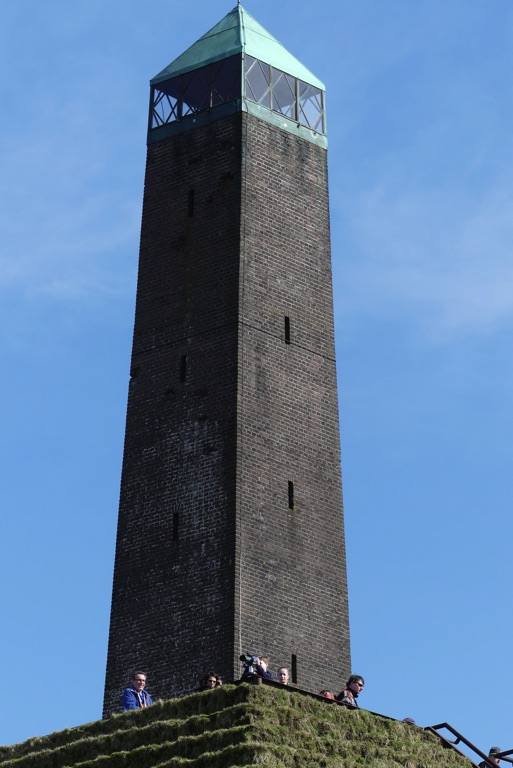Summary
Introduction to Pyramid of Austerlitz
Located in the heart of the Netherlands, the Pyramid of Austerlitz is a historical marvel steeped in European history. Built by the soldiers of Napoleon’s Grande Armée, this unique pyramid stands as a monument to their time in the region. Surrounded by lush forest, the structure offers visitors a glimpse into the Napoleonic era, commemorating the military achievements of the time. Its earthen form, topped with a stone obelisk, provides a distinctive silhouette against the natural landscape, attracting history enthusiasts and tourists alike.
Get your dose of History via Email

Cultural Significance and Architecture
The significance of the Pyramid of Austerlitz extends beyond its military origins. It is a symbol of French influence and architecture during the early 19th century. While not built as a tomb or temple, its pyramid shape draws parallels with ancient Egyptian structures, showcasing a fusion of cultural ideas during Napoleon’s campaign. The site not only offers historical insights but also serves as a serene spot for contemplation amidst the tranquil woods of Utrechtse Heuvelrug, a testament to the lasting effect of historical architecture on local culture.
Visiting the Monument Today
Today, the Pyramid of Austerlitz is accessible to the public, offering educational opportunities and picturesque views from its summit. As a beacon of heritage, the site is meticulously maintained, allowing visitors to climb the monument for a panoramic view of the surrounding area. Interactive exhibits and guided tours enhance the visitor experience, delving into the rich history of the site and its construction. The pyramid remains an integral part of Dutch cultural heritage, inviting people from all over to explore and appreciate its historical significance.
Historical Background of Pyramid of Austerlitz
The Origins During the Napoleonic Era
At the dawn of the 19th century, Europe underwent monumental changes with Napoleon Bonaparte’s rise to power. In the midst of these dynamic times arose an unusual landmark, the Pyramid of Austerlitz, in the Netherlands. Constructed by the French army in 1804, this earthen pyramid served as a testament to their military strength. Its creation was an act of homage to their victories, particularly the Battle of Austerlitz, which is often hailed as Napoleon’s finest triumph.

Construction by Soldiers
The pyramid was built under the direction of General Auguste de Marmont. The soldiers who crafted it transformed the landscape, shaping a hill into a pyramid capped by a wooden obelisk. It wasn’t merely a military exercise; the construction manifested the army’s discipline and unity. The troops carried soil and stones, laboring to create a monument that would proclaim their presence in the region for centuries to come.
Architectural Influence and Design
Influenced by the iconic pyramids of ancient Egypt, the design choice reflected the period’s fascination with Egyptology. The Pyramid of Austerlitz represented a blend of cultural and architectural expressions, linking the legacy of ancient civilizations with the imperial aspirations of Napoleon’s era. The wooden obelisk atop the pyramid bore testament to these inspirations, though it later gave way to a stone replica, ensuring its endurance against the elements.
The Pyramid of Austerlitz served more than a military purpose. It became a symbol of French power cast across the European landscape. However, after Napoleon’s fall, the monument’s fate hung in balance. Over time, neglect took its toll and the terrain began to reclaim the pyramid. It wasn’t until the 20th century that efforts were made to restore and preserve this piece of Napoleonic history, solidifying its status as a historical site of significant value.
Today, the Pyramid of Austerlitz stands as a striking point of interest in the Utrechtse Heuvelrug National Park. It is not just a relic of the past but a living museum that continues to educate and fascinate visitors. A climb to its zenith rewards with panoramic views, whereas various events and reenactments bring the site’s storied past to life. Thus, the pyramid endures, bridging the gap between history and modernity, inviting exploration and reflection upon the indelible marks left by history’s passages.

The Discovery of Pyramid of Austerlitz
Unearthing the Monument
The Pyramid of Austerlitz was not so much discovered in the conventional sense as it was gradually noticed. Erected in 1804, time saw it becoming part of the local landscape. As the 19th century progressed, the site’s military origins dwindled in memory. The pyramid itself fell into disrepair, with nature beginning to claim back the land.
Renewed Interest in the 20th Century
The true rediscovery occurred as historical interest peaked in the early 20th century. Locals and historians began to acknowledge the site’s historical value. They set in motion efforts to rescue the pyramid from oblivion. It was through these endeavors that the monument re-emerged as a point of significance, reflecting an illustrious period of European history.
Preservation and Restoration
In the 1980s, the Pyramid of Austerlitz saw a resurgence in attention. With this, came a focused drive to restore it to its former glory. Financial aid and support from the Dutch government, alongside initiatives by cultural heritage organizations, enabled extensive restoration work. They intended to secure the pyramid’s future for generations to come.
The site’s newfound prominence spurred an influx of visitors, driven by curiosity and the desire to connect with the past. Through restoration, the monument gained new life and its historical narrative became clearer. The efforts unveiled the pyramid’s strategic significance, re-establishing it as a tribute to the soldiers who shaped it centuries prior.
Now standing proudly within the Utrechtse Heuvelrug National Park, the Pyramid of Austerlitz acts as a beacon of history. It offers a tangible connection to the Napoleonic era for all who visit. The site’s story is a testament to the enduring power of curiosity and the importance of preserving our cultural heritage for future discovery and enlightenment.

Cultural Significance, Dating methods, Theories and Interpretations
The Importance in European History
The Pyramid of Austerlitz stands as a symbol of the Napoleonic era, marking an epoch where French influence spread across Europe. Its construction by soldiers of the Grande Armée underlines the cultural impact that military campaigns had on the regions they passed through. This monument embodies the fusion of French ambitions with local Dutch landscapes, a physical reminder of a historical period characterized by power shifts and cultural exchanges.
Unraveling the Age of the Pyramid
While the date of the Pyramid of Austerlitz’s construction is well-documented, verifying its age involves historical records rather than the more typical archaeological dating methods. Records from Napoleon’s military detail the structure’s erection in 1804, providing a clear and undisputable timeline for historians. Unlike ancient sites, where carbon dating and stratigraphy play crucial roles, the pyramid’s relatively recent history offers concrete data, corroborated by various historical texts and memoirs of soldiers.
Theories Behind Its Design
Several theories have sought to interpret the reason behind the pyramid’s unique design. Some historians connect it to Napoleon’s fascination with ancient Egypt, which he considered a source of mystic inspiration and wisdom. Others view it as a strategic construction to boost troop morale and leave a lasting mark of French presence. Although the primary purpose seems to be celebratory, commemorating military victories, these different interpretations add layers of depth to the monument’s narrative.
Amidst the theories, cultural significance is evident. The monument reflects the zeitgeist of the time, where ancient histories were revisited and revered by contemporary powers. It also stands as a testament to the soldiers’ tenacity and the prevailing attitudes towards memorials and commemorations during the Napoleonic age. In the area, it has promoted a deeper understanding and appreciation of the local history, influencing cultural and educational activities.

Theories and interpretations continue to evolve as scholars delve deeper into historical contexts and comparisons with other Napoleonic structures found across Europe. The Pyramid of Austerlitz, thus, remains a topic of scholarly intrigue and a cultural asset, its significance magnified by its connection to the broader narratives of European history and military progress. Its resonating effects on our understanding of the past continue to spark interest and discourse, ensuring its place in the collective memory and historiography.
Conclusion and Sources
The Pyramid of Austerlitz is an evocative historical site that resonates with the cultural and military history of the early 19th century. Its discovery and subsequent restoration have allowed this unique monument to endure as a symbol of the Napoleonic era’s influence in the Netherlands. The pyramid’s design—its structure and meaningful location—illustrates the blend of inspiration drawn from ancient civilizations and the ambitions of a modern empire. As a physical manifestation of historical crossover, the Pyramid of Austerlitz allows visitors to step back in time, providing a tangible connection to an era of European history characterized by conquest and change.

For further reading and to validate the information presented in this article, the following sources are recommended:
Or you can check any of these reputable archaeological and historical texts:
Crowdy, T. (2006). Napoleon’s Infantry Handbook. Pen and Sword. This source provides detailed information about the daily practices and historical context of Napoleon’s Grande Armée, including the construction of monuments like the Pyramid of Austerlitz during military campaigns.
Kaizer, T. (2008). The Variety of Local Religious Life in the Near East In the Hellenistic and Roman Periods. Brill. This scholarly work sheds light on the cultural and religious influences of the time that may have influenced the design and significance of the Pyramid of Austerlitz.
Rappaport, A. (2003). The Napoleonic Wars. ABC-CLIO. This historical account offers a comprehensive overview of the Napoleonic Wars and delves into the cultural impact of France’s military advancements across Europe.
Zamoyski, A. (2005). Moscow 1812: Napoleon’s Fatal March. Harper Perennial. Zamoyski’s work includes a chapter that discusses the strategies and commemorative structures orchestrated by Napoleon’s army, providing context for the monument’s construction.
Netherlands Ministry of Culture. (n.d.). Pyramid of Austerlitz Conservation Project. This official government site outlines the preservation efforts and cultural significance attributed to the Pyramid of Austerlitz in current times.

